17 November 2024
![]() 9 mins Read
9 mins Read
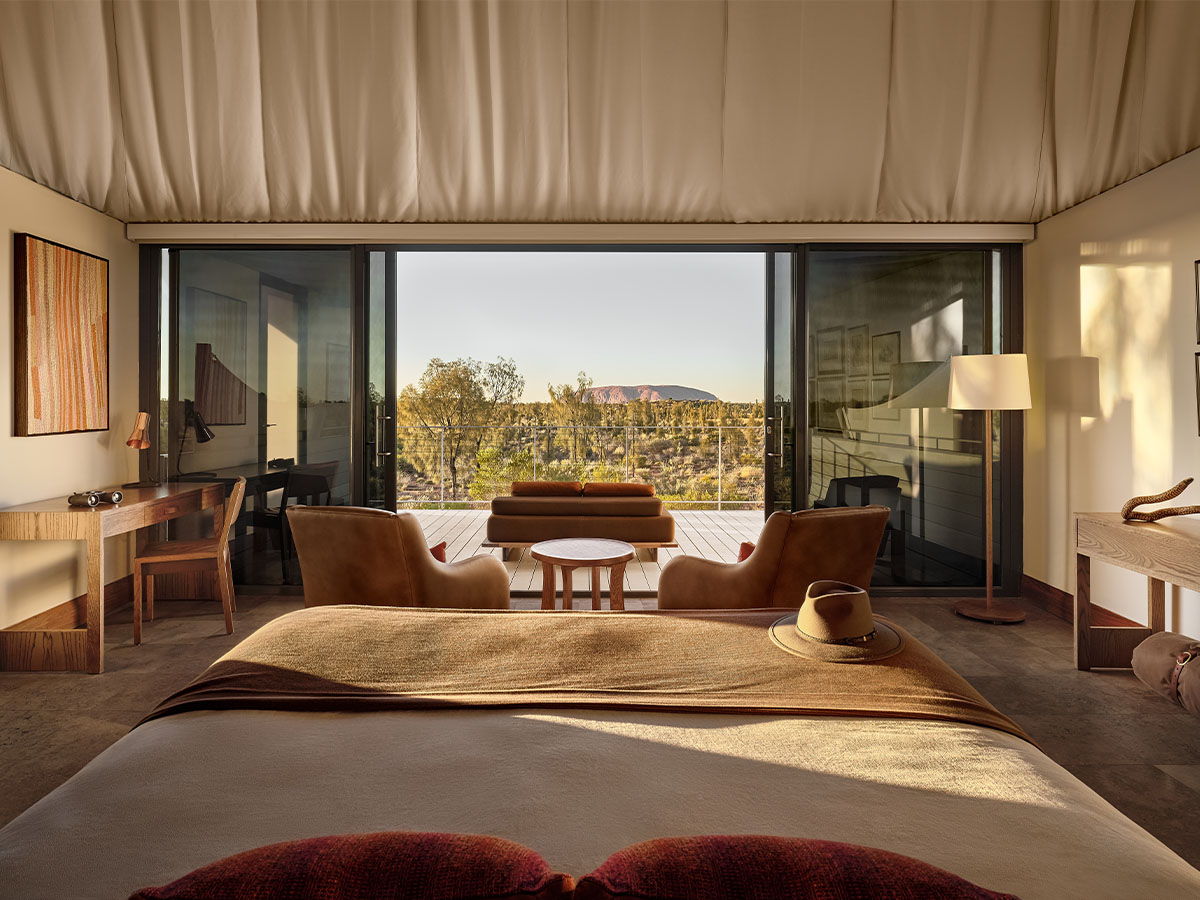
Any trip to see Uluru in the heart of the Northern Territory is going to mean a lot of time spent outside your hotel room. From rising before the crack of dawn to see the famous rising of the sun over the glowing red sandstone monolith to staying out late to dine in the desert dunes and hear Indigenous stories of the night skies, there’s a multitude of reasons that you may spend a lot of time outside while visiting the Traditional Lands of the Anangu.
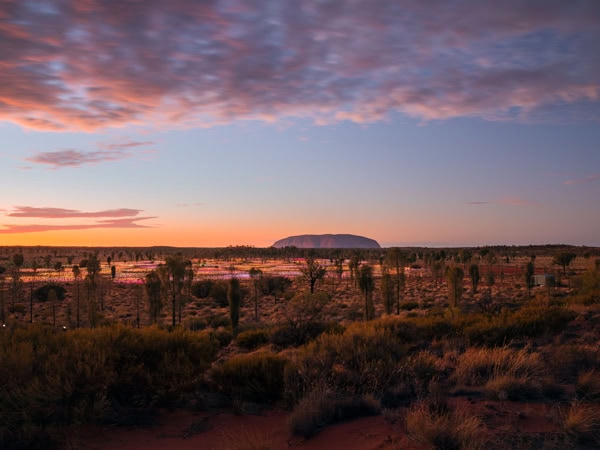
The Uluru-Kata Tjuta National Park is a once-in-a-lifetime destination. (Image: Tourism Australia)
Yet the hotel you pick can make or break your holiday. Want a cheap and cheerful campground where you can make friends, save your pennies and still wash off that red dust in the shower block? The township of Yulara, just outside Uluru-Kata Tjuta National Park has it. Want to propose on a helicopter while flying over the sands, before getting a little too loved up in a private plunge pool? This region has that too.
We’ve lined up our favourite accommodation options at the Red Centre icon below.
It’s worth noting that a trip to Uluru can make for a pricey holiday, particularly when it comes to booking accommodation in the high season. But we’re talking a once in a lifetime journey to the outback that’s bound to shake up your sense of perspective. So don’t skimp on the extras, if you can help it…
Okay, let’s start it off with the very best of the best. Longitude 131º offers the first and last word in desert luxury. Composed of sixteen pavilion tents, Uluru is the centre of attention from each. And from your private balcony, you can watch the colours shift throughout the day from the glowing reds of dawn. Of all the accommodation options in Uluru, very few rooms have a view of the Rock itself. And of all the options, the tents at Longitude 131º certainly have the best view. There are also two pools for guest to use, all-inclusive fine dining, as well as tours included in your stay.

Each luxury tent has an unobstructed view of Uluru. (Image: Baillie Lodges)
Each tent has floor-to-ceiling windows, a private terrace with a campfire and daybed, a rain shower, beautiful Indigenous art and music system, as well as those killer views.
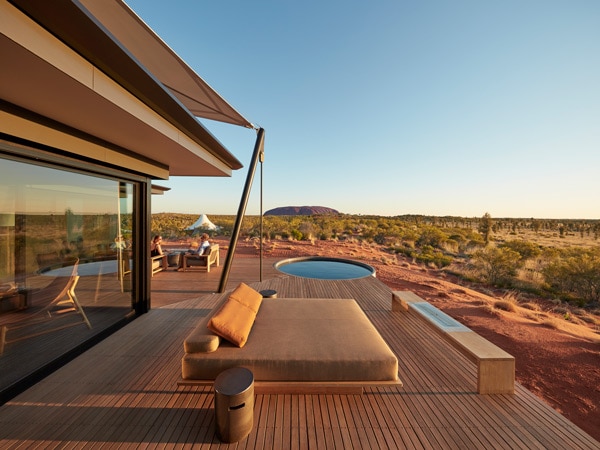
Lounge by the lodge pool to soak up stunning views of the Uluru landscape. (Image: Tourism NT/George Apostolidis)
Want to amp it up? The Dune Pavilion has its own private plunge pool, with views over both Uluru and Kata Tjuta. The Spa Kinara and exclusive experiences that include a helicopter ride over the park, or a sunrise or sunset camel ride through the dunes merely top off the whole unbelievable glamping experience. We’ve written a detailed breakdown of what it’s like to stay at Longitude 131º here.

Stay at Longitude 131 for a unique glamping experience. (Image: Tourism NT/George Apostolidis)
Ayers Rock Resort runs most of the accommodation available near the Uluru-Kata Tjuta National Park, from camping to motels and luxury offerings. The Voyages Tourism group who run the resort put profits towards Indigenous training and employment, as well as supporting local culture, and chances are, you will be staying at one of their locations on your visit.
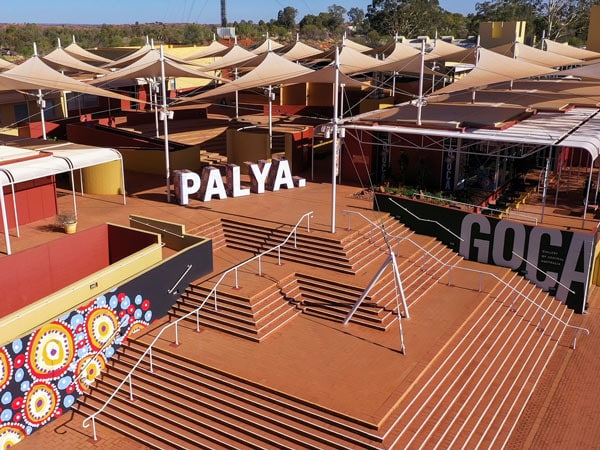
The Gallery of Central Australia features the works of local Anangu artists.
Whichever resort location you pick, don’t forget to visit the Gallery of Central Australia (GoCA). It’s located next to Desert Gardens Hotel (more about that below), and you can head onto one of their free daily tours to learn Indigenous stories from the region and see the revolving exhibitions.
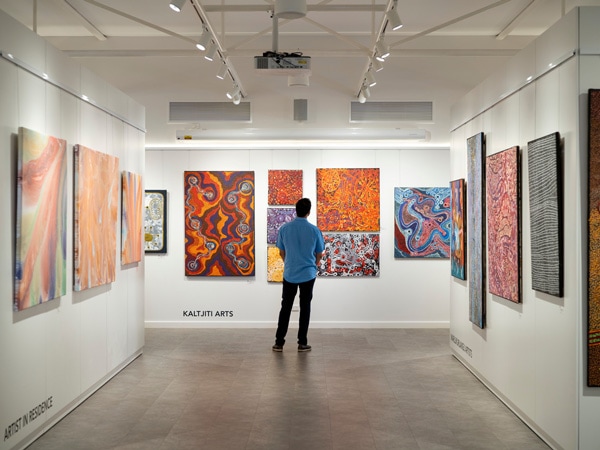
Have a look inside the gallery for impressive artistic creations.
Another highlight at the resort? The Tali Wiru (meaning ‘beautiful dune’ in local Anangu) bush tucker-fine dining experience is housed on a dune for a maximum of 20 guests. Expect canapes like pressed wallaby with fermented quandong and three delectable courses, such as Paroo kangaroo tartare or Davidson plum, lemon myrtle and quandong, all paired with wine; before finishing with a talk on astrology. (We’ve lined up more of the best Uluru dining experiences here.)
If you’re not renting a car, complimentary airport returns are included for all Resort guests, and a free shuttle bus is available if you want to hop from hotel to hotel.
The plushest offering from the Ayers Rock Resort, the five-star Sails in the Desert is around 25 kilometres from Uluru and 50 kilometres from Kata Tjuta. Local Anangu art and culture are woven throughout the hotel aesthetic, from the carpets patterned with First Nations artist designs and Mulgara Gallery to the signature Indigenous dishes at the Ilkari restaurant.
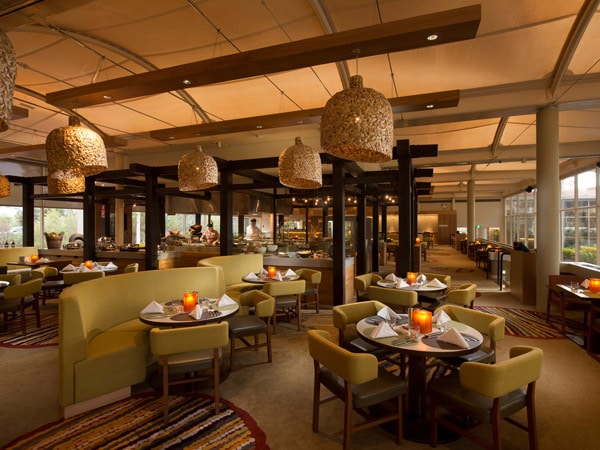
Fill your appetite with good food at Sails Ilkari Restaurant. (Image: Voyages Indigenous Tourism Australia/Adam Bruzzone)
Book in at the Red Ochre Spa for some major pampering after a day touring the sandstone monolith, simply relax by the gumtree-lined pool or order a pre-dinner drink at the Walpa Lobby Bar. If you can, try and book one of their rooms with a view of the rock. Trust us, it’s worth it.
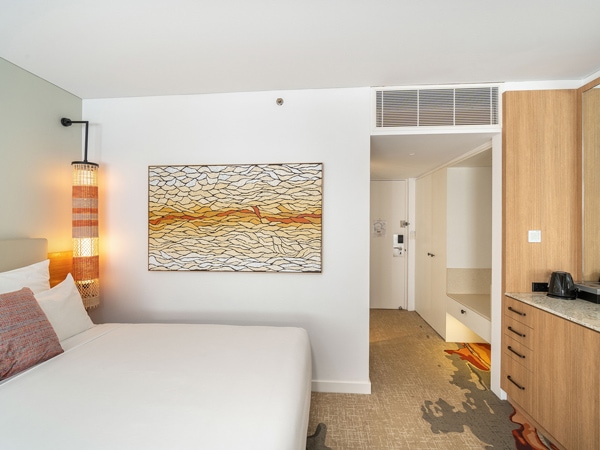
Stay cosy inside the Sail Terrace Twin room. (Image: Voyages Indigenous Tourism Australia/Lisa Hatz Photography)
In terms of the more mid-range offering, the four-and-a-half-star Desert Gardens Hotel is one of the resort’s older offerings but has been recently refurbished. Top picks for rooms include those that overlook the hotel’s stunning native garden, resplendent with local shrubs of which you can take a closer inspection on a free tour, as well as rock-view rooms.
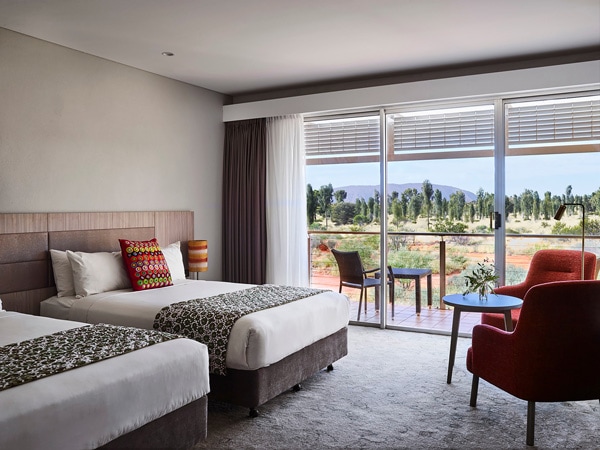
Wake up to scenic views next to the balcony of your room. (Image: Voyages Indigenous Tourism Australia)
It’s only a five-minute walk to the resort’s Town Square from here. For a lunch with a touch of bush tucker, order some native peppered kangaroo kebabs at Mangata Bistro and Bar, or a signature Native Tasting Plate at Arnguli overlooking the pool.
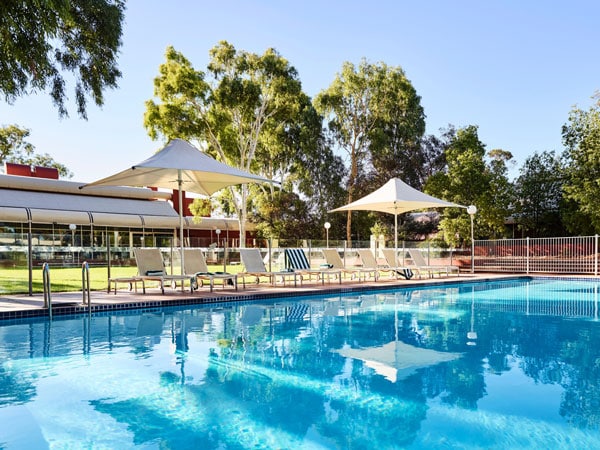
Head to the pool for a refreshing dip. (Image: Voyages Indigenous Tourism Australia)
If you’d rather save money when it comes to catering, opt for the Emu Walk Apartments. One and two-bedroom apartments include a kitchen for preparing meals (psst: head to the nearby supermarket, first), as well as including sofa beds if you’re trying to get extra economical on the family trip.
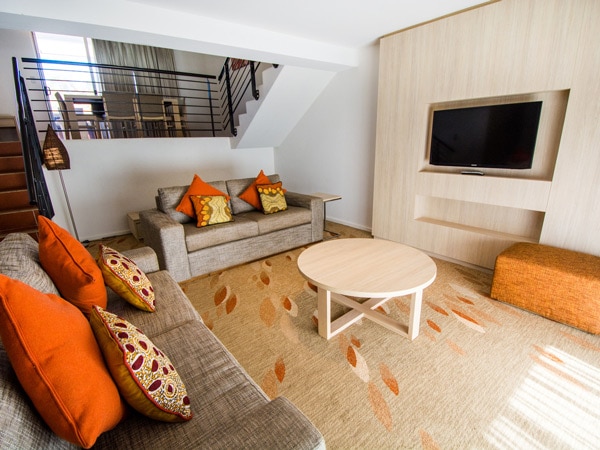
Emu Walk Apartments boast fully furnished living rooms. (Image: Voyages Indigenous Tourism Australia)
Don’t stress if you want to have a few sneaky meals out though – the Resort’s Town Square is just a few minutes walk away.
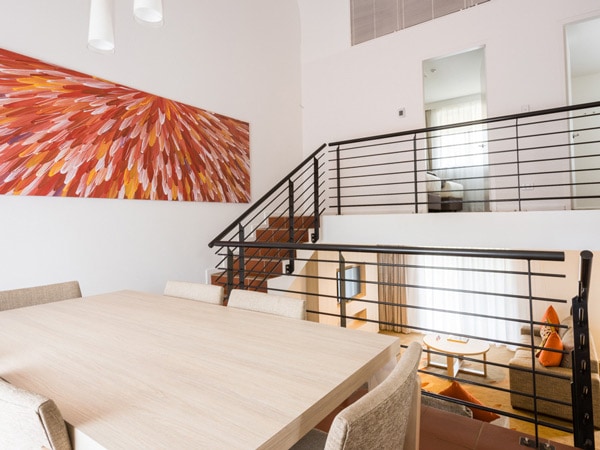
There are plenty of seating areas to rest up. (Image: Voyages Indigenous Tourism Australia)
Quirky and brightly coloured, The Lost Camel Hotel gives a Palm Springs feel with its ochre tones and clean design lines centred around a pool.
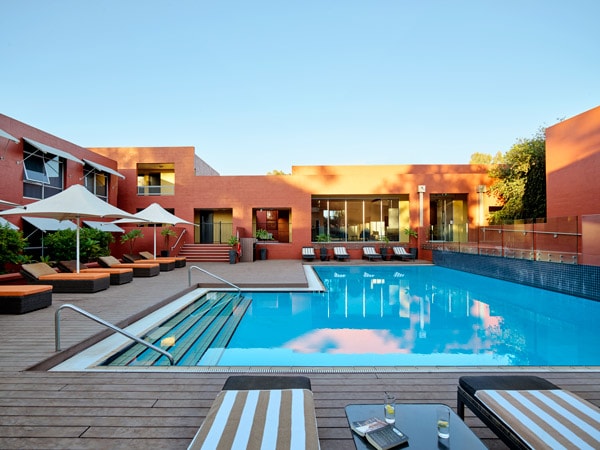
The warm desert tones give a Palm Springs feel to The Lost Camel Hotel. (Image: Voyages Indigenous Tourism Australia)
As a three-star hotel, expect lower prices (for Uluru, that is) and more basic room layouts. As with all other resort guests, your stay includes free Indigenous cultural activities, and you can make your way over to the Town Square for the supermarket and cafes.
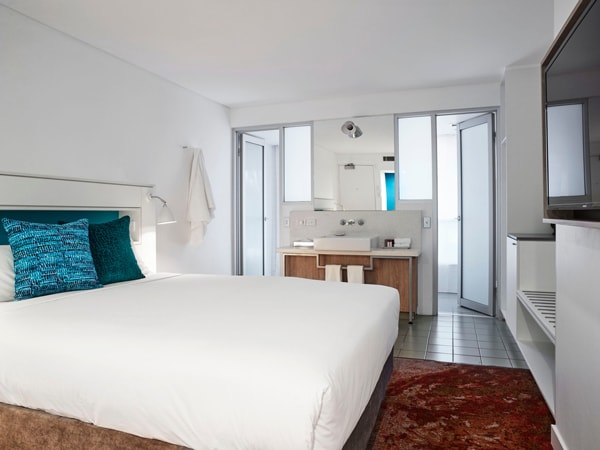
The bed is so comfy and perfect for a good night’s sleep. (Images: Voyages Indigenous Tourism Australia)
The Resort’s other three-star offering is another relatively cheap one to book. The Outback Pioneer Hotel and Lodge has a mix of dorm and budget rooms, with shared bathrooms and showers for those who opt for those without an ensuite.

Tuck yourself in your cosy bedroom at Outback Pioneer Hotel. (Image: Voyages Indigenous Tourism Australia)
Other communal features include a kitchen, common television room and self-service laundry. Cook up a storm at the do-it-yourself Outback BBQ.
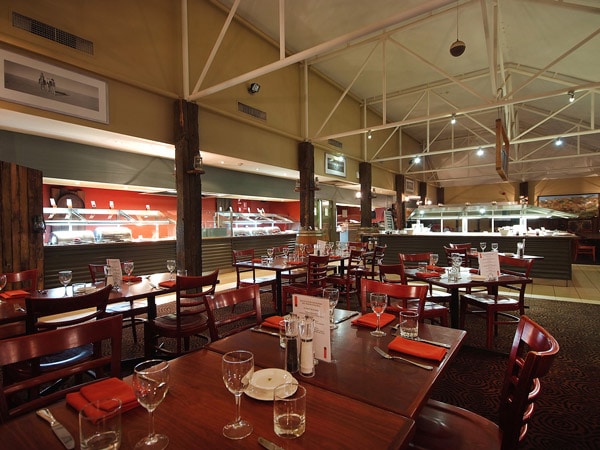
You may also opt to have your dinner at their in-house restaurant. (Image: Voyages Indigenous Tourism Australia)
Sleep under a canopy of desert stars at Ayers Rock Campground, listening to the night around you, continuing as it has for tens of thousands of years.
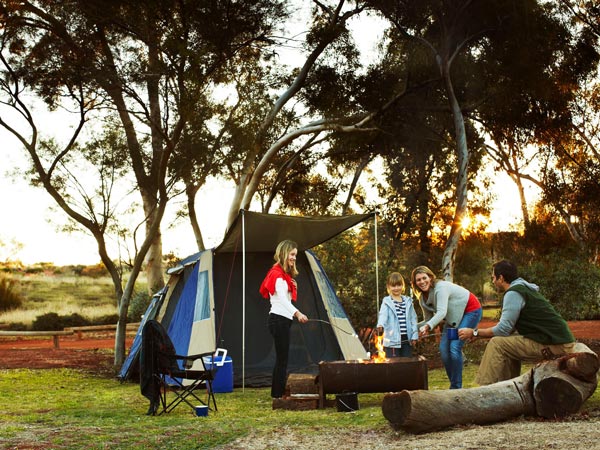
Light up a bonfire to complete your camping experience. (Image: Voyages Indigenous Tourism Australia)
The Ayers Rock Resort’s most budget-friendly option has a range of sites to pick from, including a bunk in a dorm room, cabins, and powered and unpowered sites for tents and caravans.
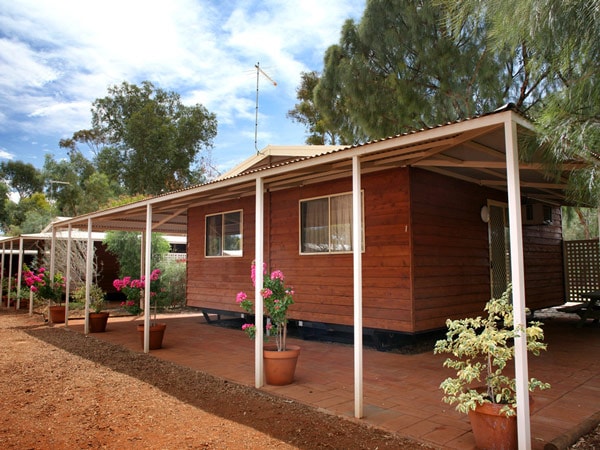
Pitch a tent or stay in a forest cabin. (Image: Voyages Indigenous Tourism Australia)Despite the more basic conditions, the campsite has a swimming pool, as well as barbecue facilities, an outdoor kitchen, self-service laundry and a playground. It’s also worth noting that you still have access to the resort’s suite of free programs. The best time to camp here is in autumn, before the nights get uncomfortably warm during the summer months or cold weather gear becomes essential in the night hours.
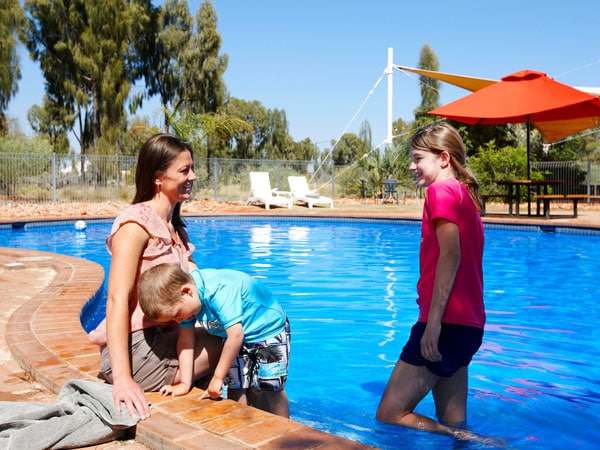
There’s even a pool where you can soak in. (Image: Voyages Indigenous Tourism Australia)
Our full-blown Uluru camping ground can be perused here.
The Curtin Springs Wayside Inn is a fair bit further out from Uluru – 100 kilometres to be exact. A tie between an operating cattle station, inn, campground and desert oasis, the Curtin Springs Wayside Inn heavily leans into giving guests a local experience.
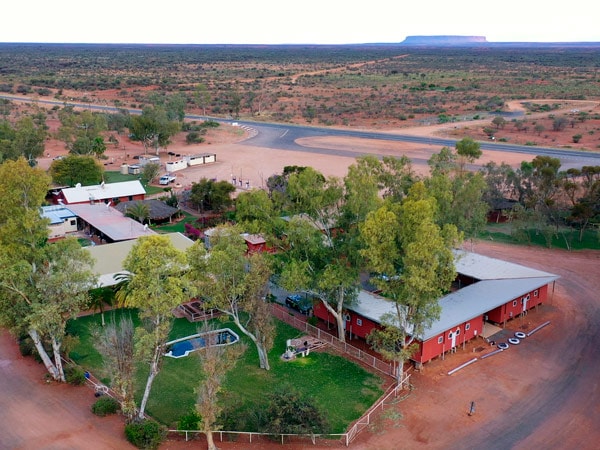
Curtin Springs Wayside Inn is ideal for outback travellers. (Image: Tourism Australia/Global Headquarters)
Highlights include its homestyle meals at the historic Bough Shed (steak, anyone?), a program of private walks to learn more about the flora and fauna of the area, as well as visits to the local salt lake, and tours of Curtin Springs Paper.
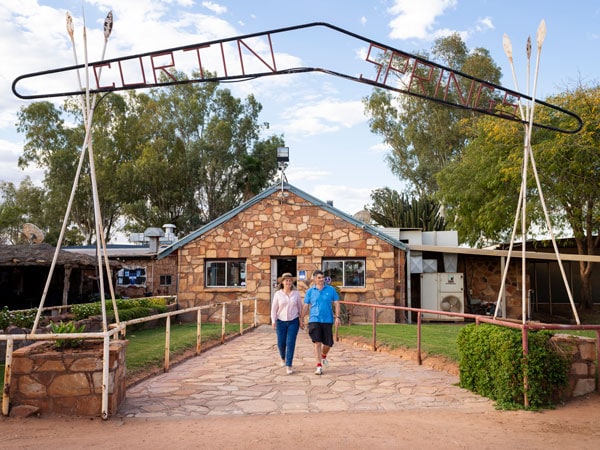
Spend your laid-back weekends here. (Image: Tourism Australia/Global Headquarters)
Sleeping options include budget rooms with shared bathrooms, family rooms with wheelchair-friendly bathrooms with ramp access, powered campsites and free unpowered sites.

Experience outback luxury at Curtin Springs Wayside Inn. (Image: Tourism Australia/Global Headquarters)
Make use of the barbeque area, as well as coin laundry facilities. An onsite store sells petrol, as well as food, and the inn is pet-friendly. The unpowered sites are free. There is a $4 per person per shower charge and it costs $10 to fill up your tank with water.
Every summer gets the spectacle of lightning storms in Uluru -Kata Tjuta and it is fun to watch in the summer sky when it rains and the heat of the desert. Most rains fall in the summer and can be heavy.